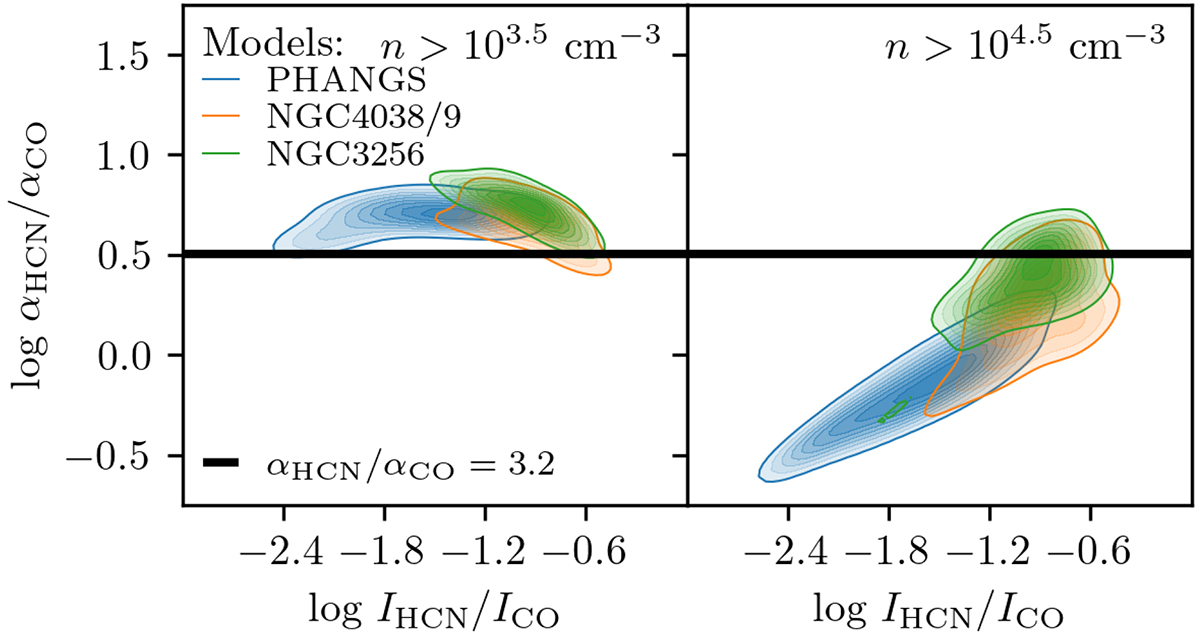Fig. 8.

Download original image
Ratio of the HCN and CO conversion factors (given in Eq. (19)) as a function of the ratio of the HCN and CO intensities, where we consider αHCN as a conversion factor for the total mass above n > 103.5 cm−3 (left) and n > 104.5 cm−3 (right). For comparison, we plot αHCN/αCO = 3.2 (solid black line), which is the ratio of the Gao & Solomon (2004a,b) conversion factor and Milky Way CO conversion factor. The formatting is the same as in Fig. 3. This figure demonstrates how emissivity is sensitive to the intensity per mass traced by a particular transition, whereas luminosity-to-mass conversion factors account for additional factors that allow us to estimate specific masses (e.g., total gas mass and dense gas mass) that may not be fully reflected in the molecular emissivity. We find that due to the subthermal excitation of HCN J = 1–0, this transition is a poor tracer of the of the gas mass above n > 104.5 cm−3 and is a better tracer of moderate gas densities (n > 103.5 cm−3), as found in previous observational studies.
Current usage metrics show cumulative count of Article Views (full-text article views including HTML views, PDF and ePub downloads, according to the available data) and Abstracts Views on Vision4Press platform.
Data correspond to usage on the plateform after 2015. The current usage metrics is available 48-96 hours after online publication and is updated daily on week days.
Initial download of the metrics may take a while.


